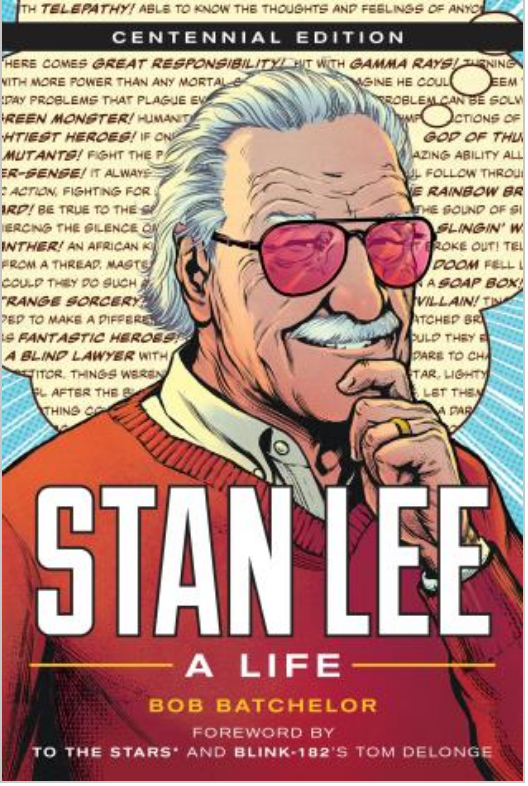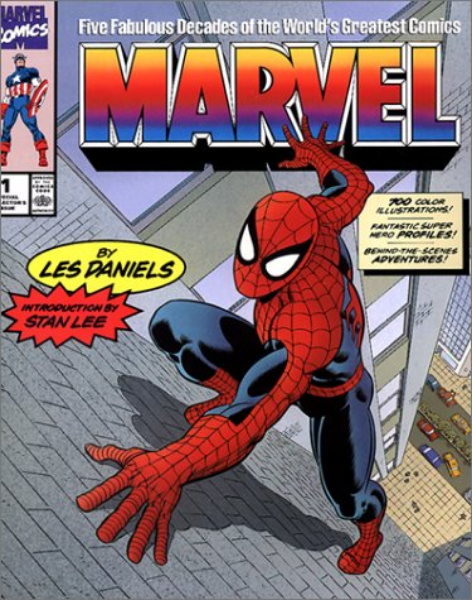“Stan Lee: Spider-Man and Marvel Comics” — February 22, 2024
The Yuh Prosthodontics Lecture
William B. Crawley Great Lives Lecture Series
Biographical Approaches to History and Culture begins its third decade with a program on January 16, 2024. The schedule includes a total of 18 programs, running through March 28.
Bob Batchelor lecture on Stan Lee at University of Mary Washington
Join cultural historian Bob Batchelor on an exhilarating journey into the extraordinary life of Stan Lee, an icon whose legacy is as epic as the superheroes he co-created. Renowned for film cameos as the Marvel movie franchise conquered the world, Lee would have been 101 today, providing the perfect moment to delve into his profound impact on contemporary America and global culture.
Batchelor presents Lee’s life in 10 pivotal moments, each encapsulating an era of modern history. From the Roaring Twenties to the Great Depression, the American Century to the twenty-first century, his journey mirrors the sweeping narrative of the nation itself. Lee’s vision and creative genius revolutionized pop culture, introducing us to superheroes that were as complex and fallible as their creator (and all of us).
Experience the highs and lows, drama and humor of Lee’s life via a narrative that not only explores a cultural visionary, but also uncovers the heart of a man who dreamed of writing the Great American Novel and, in the process, rewrote the script of global pop culture. This is the story of Stan Lee, a true American icon, whose legacy continues to entertain and inspire generations around the world. Excelsior!
BRIEF BIO
A 3-time winner of the Independent Press Book Award, cultural historian Bob Batchelor has been hailed as “one of the greatest non-fiction writers and storytellers” by New York Times bestselling biographer Brian Jay Jones. His books examine modern popular culture icons, events, and topics, from comic books and music to literary figures and history’s outlaws.
By day, Bob is a diversity, equity, and inclusion advocate and ally at The Diversity Movement, a Raleigh DEI consultancy. By night, he is the author of 14 books, editor of 19 books, and has been published in a dozen languages. He is best known as biographer of Marvel icon Stan Lee, having written 3 books on him and numerous essays and chapters, one on Spider-Man appearing in Time.
An interdisciplinary writer, Bob has published books on Jim Morrison and the Doors, Bob Dylan, The Great Gatsby, Mad Men, and John Updike, among others. He wrote an award-winning illustrated history of Rookwood Pottery, the revolutionary company that became one of the great art potteries in the world, and The Bourbon King: The Life and Crimes of George Remus, Prohibition’s Evil Genius, a rollicking tale of the infamous bootleg baron, as widely known in the Roaring Twenties as Warren G. Harding and Babe Ruth.
Bob’s work has appeared or been featured in the New York Times, Cincinnati Enquirer, Los Angeles Times, and PopMatters. He created the podcast “John Updike: American Writer, American Life” and “Tales of the Bourbon King: The Life and True Crimes of George Remus.” He has appeared as an on-air commentator for The National Geographic Channel, PBS NewsHour, PBS, the BBC, and NPR. Bob hosted “TriState True Crime” on WCPO’s Cincy Lifestyle television show.
Bob earned his doctorate in American Literature from the University of South Florida and an M.A. in History from Kent State University after graduating from the University of Pittsburgh. He has taught at universities in Florida, Ohio, and Pennsylvania, as well as Vienna, Austria. Bob and his wife, antiques and vintage expert Suzette Percival live in North Carolina and have two wonderful teenage daughters.















